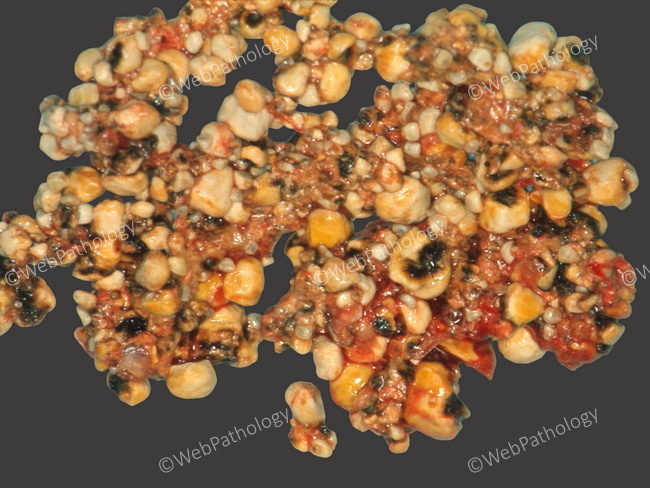Brown Pigment Gallstones : Pathophysiology


Comments:
Pathophysiology of Brown Pigment Gallstones (continued from the previous image): Role of Bacterial Enzymes: Microbial β-glucuronidases hydrolyze bilirubin glucuronides and release free bile acids and unconjugated bilirubin. Bacterial phospholipase A1 degrades phospholipids to form lysolecithin and free fatty acids (palmitic and stearic acids). Free bile acids and free fatty acids combine and precipitate as calcium salts around bacterial debris and get trapped in mucus gel to form brown stones. Role of Gallbladder Mucosa: In normal conditions, bile has an acidic pH which increases the solubility of compounds like calcium bilirubinate and calcium carbonate. Inflammation of the gallbladder mucosa (or any metaplastic changes) interfere with this function by producing copious mucin glycoproteins. The resultant increase in biliary pH promotes precipitation of calcium carbonate and other compounds.



